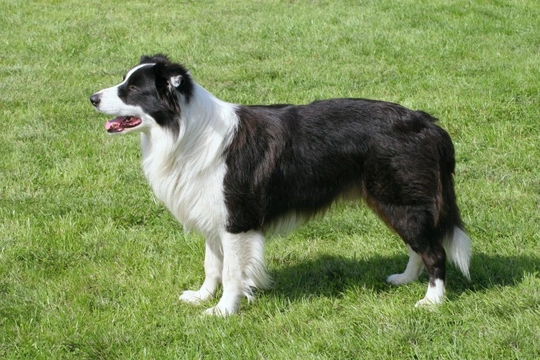Pets
Pets for studWanted petsBreedersAccessories & services
Knowledge hub
Support
Support & safety portal
Ceroid Lipofuscinosis (CL) in the border collie
Ceroid lipofuscinosis is a lysosomal storage disease that occurs due to a hereditary metabolic defect in affected dogs. This causes levels of ceroid lipofuscin (the residue from lysosomal digestion) building up in the cells in various parts of the body, including the brain and the retinas of the eyes.
This in turn leads to neurological problems in affected dogs, which can cause dementia-like symptoms, seizures, out-of-character behaviour, and a range of other problems that may at first be mistaken for behavioural issues. The condition cannot be treated or managed and ultimately leads to death in affected dogs, usually at a young age.
The only way that the condition can be passed on from dog to dog is by means of the breed line, when dogs carrying the faulty gene that causes the condition breed and so, pass it on to their offspring. Certain breeds and types of dogs are known to have higher risk factors for the gene mutation than others, and it is important that dogs known to be of an at-risk breed are tested prior to breeding, so that an informed decision can be made about the viability of any given match.
In this article we will look at ceroid lipofuscinosis in dogs in more detail, including what sort of dogs can be affected by the condition, how it is inherited, and how to get your dog tested. Read on to learn more.
More about ceroid lipofuscinosis
Ceroid lipofuscinosis tends to become apparent in dogs with the condition when they are still relatively young, usually between the ages of one and two. Prior to this, they will appear to be ostensibly normal and healthy, although the condition is in fact present from birth.
Ceroid lipofuscinosis is a metabolic defect, and from the time the affected animal is born, ceroid lipofuscin waste will already be building up in the body’s cells, particularly those in the brain and retina. This in turn causes the compression and destruction of the healthy cells of the brain, which leads to the signature symptoms of the condition.
The symptoms of ceroid lipofuscinosis in dogs are sometimes mistaken for behavioural problems, and can include any or all of the following:
- Appearing to be shaky or wobbly and unable to move and walk normally, which may become particularly apparent when jumping or attempting to move up and down stairs.
- Apparent alarm or phobia of going to strange places or being faced by strange things.
- Hyperactivity and other manic-type behaviours.
- Seizures.
- Out-of-character behaviour, including potential aggression.
Once symptoms become apparent, the condition is quick in onset and there is no way of treating or resolving it. Affected dogs rarely live more than a few months past diagnosis, and may be euthanized earlier to avoid prolonging their suffering.
What sort of dogs can be affected by the condition?
Ceroid lipofuscinosis is a hereditary health condition, which means that the only way that it can be passed from dog to dog is by means of inheritance of the gene fault that causes the condition from their parents.
The Border collie is the breed most widely associated with ceroid lipofuscinosis, and so dogs from this breed that are intended to be used for breeding should be tested for the condition first, to ensure that only dogs that will not pass the condition onto their offspring are bred from.
Around 3% of all Border collies are carriers for the condition.
How does the heredity of the condition work?
Ceroid lipofuscinosis is an autosomal recessive condition, which means that dogs need to inherit a specific combination of faulty genes from both parents in order to be affected with the condition. Dogs are given one of three statuses for the condition; clear, carrier and affected, and different status combinations in the parent dogs lead to different presentations in their offspring, which are outlined as followed:
- Two affected dogs will have puppies that are also affected.
- Two clear dogs will have clear puppies.
- Two carrier parents will result in each puppy having odds of 50% carrier, 25% clear and 25% affected.
- A carrier and a clear dog produce 50:50 odds of each puppy being clear or a carrier.
- An affected dog and a carrier produce 50:50 odds of each puppy being affected or a carrier.
- An affected dog and a clear dog will produce a litter of carriers.
How can I get my dog tested?
The status for any given dog-clear, carrier or affected-can be determined by means of a DNA test, and it is important that border collies intended to be used for breeding be tested first, and an informed decision about the viability of a match made on the basis of the test for the two potential parent dogs.
In order to get your dog tested, you will just need to ask your vet to take a DNA sample from them, which is then tested by one of The Kennel Club’s approved laboratories, and the results returned to the owner.



